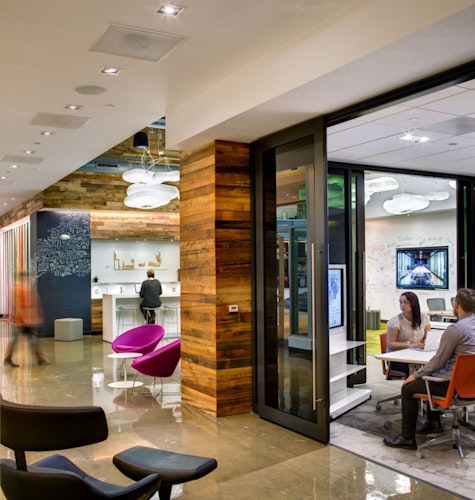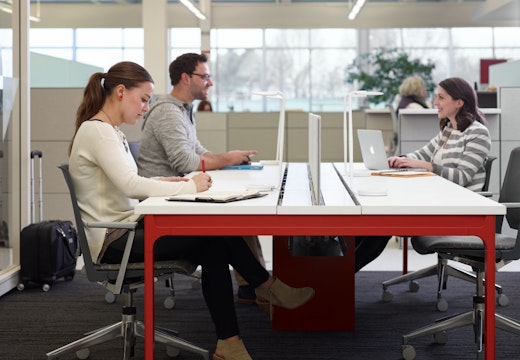Corporate coworking: why companies are taking it in-house
Coworking started as a social movement but now it is going in-house as corporations seek to create a coworking-like approach in their workplaces. Gabor Nagy of Haworth explains why this is happening
Corporations needing to innovate often struggle to have the right talent at the right time in the right quality, quantity and composition. Additionally, while traditional corporations with their infrastructure, established culture and hierarchy may be best for processes and organisational management, these same things can stifle innovation.
Coworking, on the other hand, seems to meet the increasing need to innovate. With this in mind, corporations are now setting up their own coworking-like spaces. What better way to have a coworking-like culture than to create one’s own, in-house?
More than just cool spaces
Our own research into this growing phenomenon, however, is that there is much more to the corporate adoption of a coworking philosophy than just creating cool spaces. We are on the brink of the fourth industrial revolution, where the changing nature of work and flexible work are heavy influencers. This means that organisations must manage disruption, risk, space and place as they seek to innovate. These four challenges have created a ‘perfect storm’, forcing companies to rethink the role of their workplaces in regard to innovation – and they’re thinking more like those that built the coworking movement.
This movement is now in its fourth stage of evolution. In the first stage, coworking emerged as a social movement to bring remote workers and isolated freelances together, out of isolation, and sharing the rent of a larger space. They also found that working together and coordinating their expertise prompted unexpected innovation. Then coworking rode the start-up wave of small business as smart entrepreneurs hosted coworking spaces to make a profit—both locally and nationally. Open to the public, these spaces were—and continue to be—membership-based, attracting freelancers, start-ups, and some corporate employees
In its third stage, coworking became a mainstream offer: the consumerisation of workspace followed when the frontrunners of coworking spaces grew into behemoths, such as WeWork, with its unimaginable US $20-plus billion validation in a mere eight years.
Now we’re beginning to see not just commercial coworking, but also corporations adopting a coworking-like philosophy in their own workplaces. Why? To improve innovation—otherwise, they’ll get left behind.
Two approaches stand out
While there are many corporations trying to replicate the success of coworking within their organisations, two approaches rise to the top: Open House, where consumers and users are called in on a drop-in, exploratory basis to help improve corporate marketing and sales; and Campsite – entrepreneurs, disruptors and start-up are given space on a temporary, invitation-only basis to support company transformation and innovation.
Our research revealed that the reasons for building coworking-like spaces vary widely but can be classified by three primary drivers: first, transformation – the opportunity to offer controlled, purposeful disruption, and provoke change by establishing a proof of concept; second, innovation –the chance to create a start-up ecosystem, co-locating internal employers with start-ups; and third, future-proofing – to look further than the company’s boundaries of expertise and collaborate across diverse domains.
Failures are instructive
While many companies have been effective in addressing these goals, not all corporate in-house versions of coworking have been a success. Failures we analysed identified some key learnings. Space for these activities need to look different from the organisation’s standard corporate office, or users won’t come. Community managers are the glue for these communities; when they leave, the success of the spaces is often in jeopardy. Finally, some companies have learnt that hard way that culture trumps strategy every time. Cultural fit is critical.
Despite these setbacks, we can expect the trends towards corporate coworking to increase in 2019. Bringing a coworking philosophy into an organisation is more than just inviting start-ups or creating a hip, chaotic work environment. Companies may need to forgo several core cultural values—prioritising self-directed learning and working with each other in organic ways, investing in building communities and relationships built on trust, and encouraging boldness and ‘value ecosystems’ rather than value chains.
In this exclusive WORKTECH Academy video, Dr Gaby Nagor of Haworth discusses the rise of corporate coworking.








